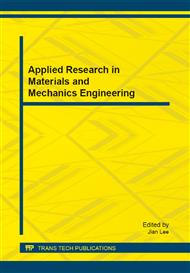p.3
p.7
p.13
p.19
p.24
p.30
p.35
p.39
p.44
Hygric Transport Parameters of Several Kinds of Sandstones
Abstract:
Hygric transport properties belong to a group of important characteristics from a construction design point of view. Since a content of water (at whatever state) could lead to degradation processes of materials whether by phase changes or by chemical reaction (with any component of water contained), it is important to know an amount of water which can get into the pore structure of a material. Studied materials in this workwere sandstones. Several types of these clastic sedimentary rocks were chosen and experimental determinations of basic physical properties as well as hygric transport parameters were performed. From the achieved results,it is obvious that the main influence on hygric transport characteristics has the open porosity, in particular the pore structure.The higher porosity is the higher amount of water can be transported through the sandstones.
Info:
Periodical:
Pages:
24-29
Citation:
Online since:
August 2014
Authors:
Price:
Сopyright:
© 2014 Trans Tech Publications Ltd. All Rights Reserved
Share:
Citation:


